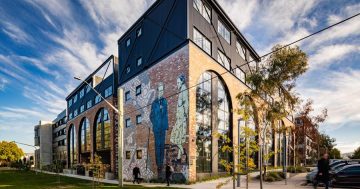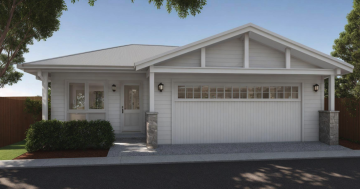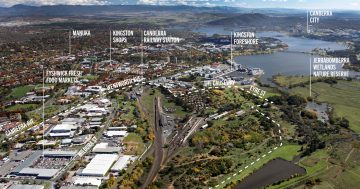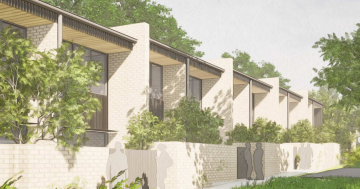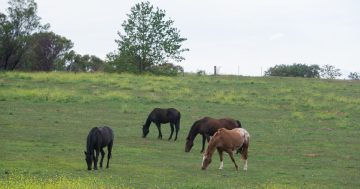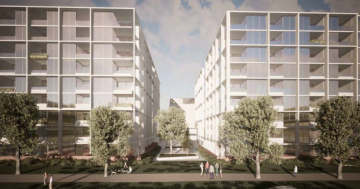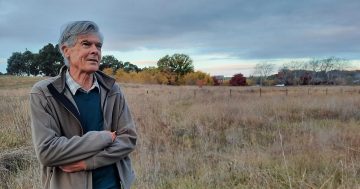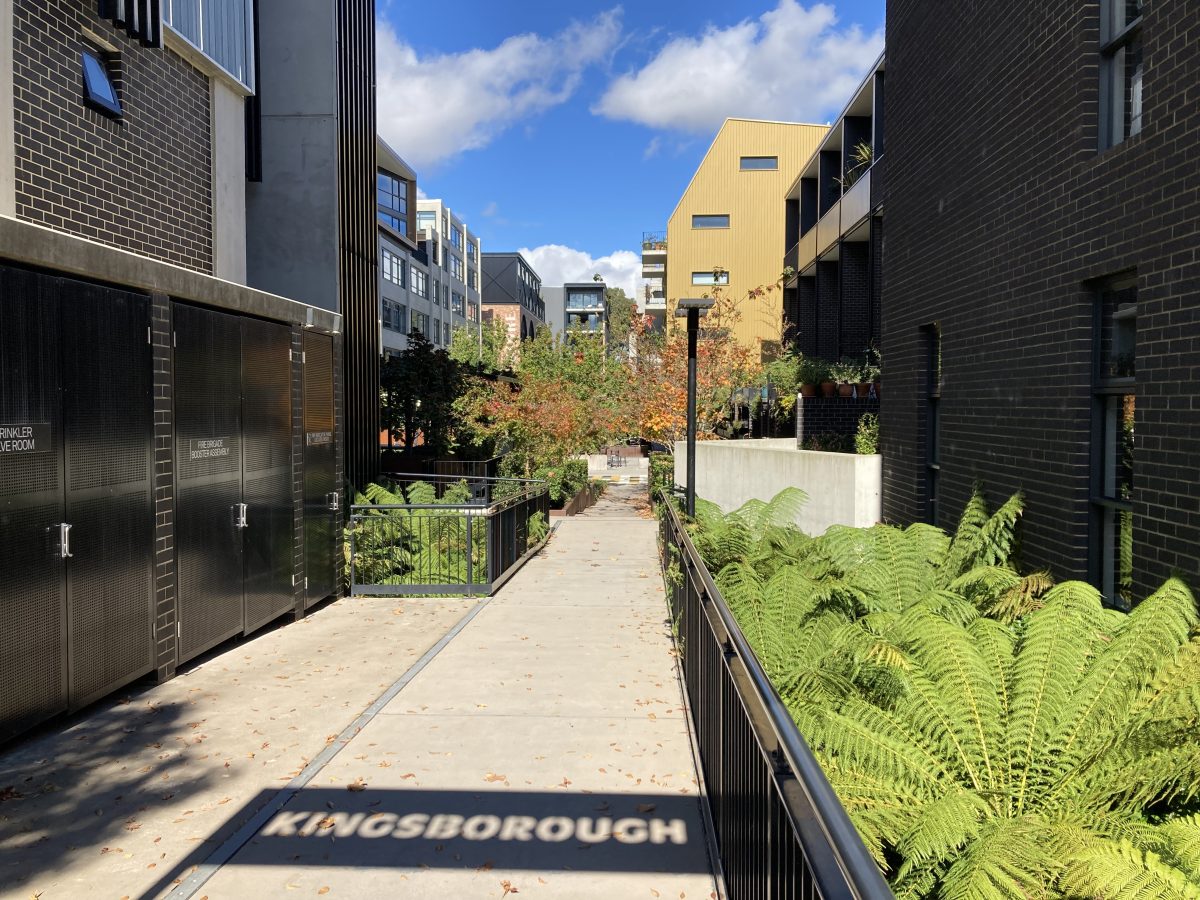
The Kingston Foreshore (Kingsborough) is distinguished by very dense buildings with minimal communal open space and tree cover, yet Minister Steel says it’s a ‘model’ development. Photo: Michelle Kroll.
The recent news of the ACT Government’s plans for 1300 new dwellings in North Curtin, apparently without shops, community facilities or adequate road connections, is just the latest example of this government’s propensity to rush out ‘quick-fix’ proposals in response to the housing crisis and to pander to the worst kind of developers.
This would result in a town centre-type, very high-density building with little room for open space and tree cover, in defiance of the government’s ‘Living Infrastructure Plan’.
At the other end of the scale, they are now allowing the subdivision of low-density suburban house blocks, inevitably trashing the high environmental quality of Canberra’s early housing areas with no great gain in affordable or appropriate new housing. No thought has been given to sensible-scale ‘medium-density’ development, as used to happen 20 or more years ago.
We also see this in the ‘first stage’ of the East Lake ‘urban renewal’ area, which involves redevelopment of The Causeway (fully occupied) public housing area and currently vacant land to its north. This is a net area of about four hectares, and the recent ‘Draft Plan Amendment A’ also promises (coincidentally?) up to 1300 dwellings.
This would be a very high residential density of more than 300 dwellings per hectare, but it is actually equivalent to the latest complex in the Kingston Foreshore (‘Kingsborough’). It is distinguished by very dense buildings with minimal communal open space and tree cover, yet Minister Steel’s comments on East Lake particularly identified this as a ‘model’ development.
Don’t worry about the existing Causeway Housing tenants or the fact that half this site is flood-prone land and was not redeveloped by the NCDC in the 1970s for that reason. Don’t worry about providing any replacement social housing in the new development. Don’t worry about community facilities for the new residents, which are already in very short supply right across Kingston, where the last child care centre has recently closed and is proposed to be replaced by a four-storey office building.
Don’t worry about the fact that this area has effectively only one external road access, so there will be significantly increased traffic on existing, very busy Foreshore streets. And, of course, it is remote from the government’s ‘solution’ to Canberra’s public transport needs, its shiny red tram (wherever and indeed if it ever does finally work its way down to Woden).
There are about 2.5 hectares of vacant, developable land at the eastern end of the Kingston Foreshore, but it is sterilised by the existing Causeway substation and incoming overhead high-voltage power lines, all of which were due to be decommissioned and removed some years ago.
The government has been reluctant to invest in such important infrastructure works while lavishing money on its largely pointless tram.
The Kingston & Barton Residents Group is not opposed to medium-density development in appropriate locations, but these need to be very carefully planned with the overriding intention of providing new climate-sensitive and socially appropriate housing.
We used to be able to do this sort of thing in Canberra, as exemplified by some public housing projects, redevelopments in ‘old’ Kingston under NCDC Guidelines and the first developments in Kingston Foreshores. The clear lessons from these are that sites need to be large (not less than about half a hectare), development intensity moderate (‘plot ratios’ not exceeding about 1:1 or 100 per cent of site area) and generous communal open space/tree cover (at least 30 per cent of site area).
The recently approved housing project at Dairy Road by the Molonglo Group shows the way. This has only 400 dwellings on a site where more than 1000 were permitted, in not more than four-storey buildings, with generous, open courtyards and plenty of space for tree cover, extensive landscaping, ponds and wetlands.
This development is the first to be (successfully) subjected to ‘microclimate assessment’, aimed at minimising urban heating, and which the ‘Living Infrastructure Plan’ sensibly called for to be applied to all major projects.
Where are the required guidelines, which apparently have been sitting on someone’s desk for several years?
Come on, ACT Government. You should be leading the way with exemplary residential projects like this rather than trying to maximise your and developers’ short-term gains!
Richard Johnston (Life Fellow, Planning Institute of Australia) is president of the Kingston & Barton Residents Group Inc. and a member of the Inner South Canberra Community Council.












